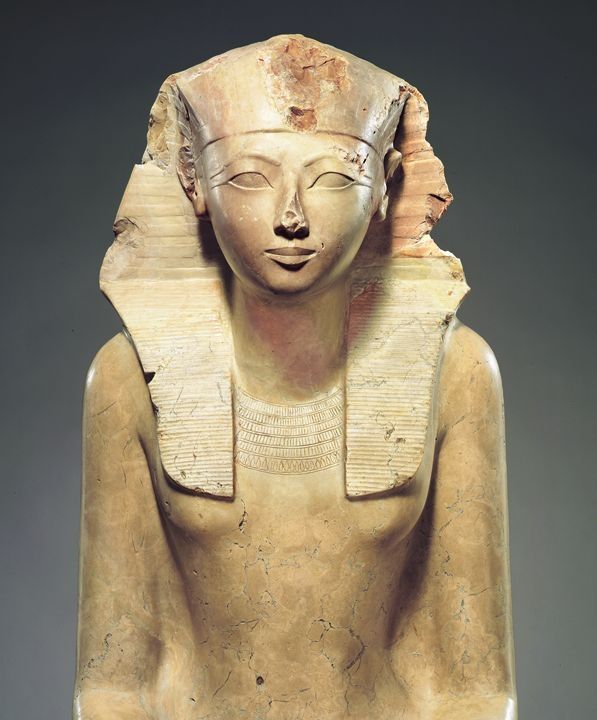Who was Hatshepsut, and Why did she present as a male pharaoh?
A pharaoh that ruled in her own right and acquired immense power.

A pharaoh that ruled in her own right and acquired immense power.
Around 170 pharaohs reigned over Egypt over a three-thousand-year period. Out of those 170, only seven were women. These women were pharaohs who impacted the Egyptian kingdom on a large scale.
One of these women was Hatshepsut, who ruled Egypt between the years 1473 and 1458 BCE. She was the third woman to become a pharaoh and the first to reign in her own right.
Early Life
Thutmose I, pharaoh of Egypt, and his queen Ahmes gave birth to their firstborn daughter, Hatshepsut. Historians don’t know much about her childhood except that she married her half-brother Thutmose II. He became pharaoh after his father’s death.
Accordingly, Thutmose II ascended to the throne about 1492 BCE and only ruled for thirteen years until his premature death in 1479 BCE. Hatshepsut was his consort and bore him a daughter, Neferure.
After Thutmose II’s death, the throne went to his son Thutmose III born from his lesser wife, Isis. Because of this, Hatshepsut became his regent for Thutmose III’s childhood until he came of age. After seven years of ruling, Hatshepsut was crowned king and co-ruled with her stepson, Thutmose III.
Her Reign
Throughout her reign, Hatshepsut relentlessly tried to maintain her legitimacy. A way she did this was to portray a male pharaoh with a beard and masculine clothing. Some of her portraits depicted her as a muscular, imposing ruler. In contrast, others depicted her as a traditional Egyptian queen.
Hatshepsut was most known for her work building a memorial temple at Deir el-Bahri in Thebes. Also, she imported many goods, such as ivory and gold, from a distant place known as Punt (modern-day Eritrea).
Her Impact
Historians speculate that Hatshepsut died around 1458 BCE in her mid-forties. The Egyptians honored their pharaoh’s life by burying her in the Valley of the Kings. She even requested that her father’s sarcophagus be dug up and moved to where she’ll be buried. As a result, they can travel together in the afterlife.
As a result, Thutmose III reigned for thirty more years and destroyed almost all of Hatshepsut’s likenesses and statues. In other words, he wanted others to forget that they had a female ruler and wanted to keep the male succession line intact (absolute trash).
Because of this, historians didn’t know Hatshepsut existed until around 1822. A British archeologist named Howard Carter discovered her sarcophagus in 1903. Unfortunately, this sarcophagus was empty. After that, many archeologists tried to find her body and searched for over one hundred years. Finally, a team of archeologists found mummified Hatshepsut in 2007. She now lives in the Egyptian Museum in Cairo.
In conclusion, we know little about this female pharaoh. Above all, her symbolism of female power is vital in the education of people today.